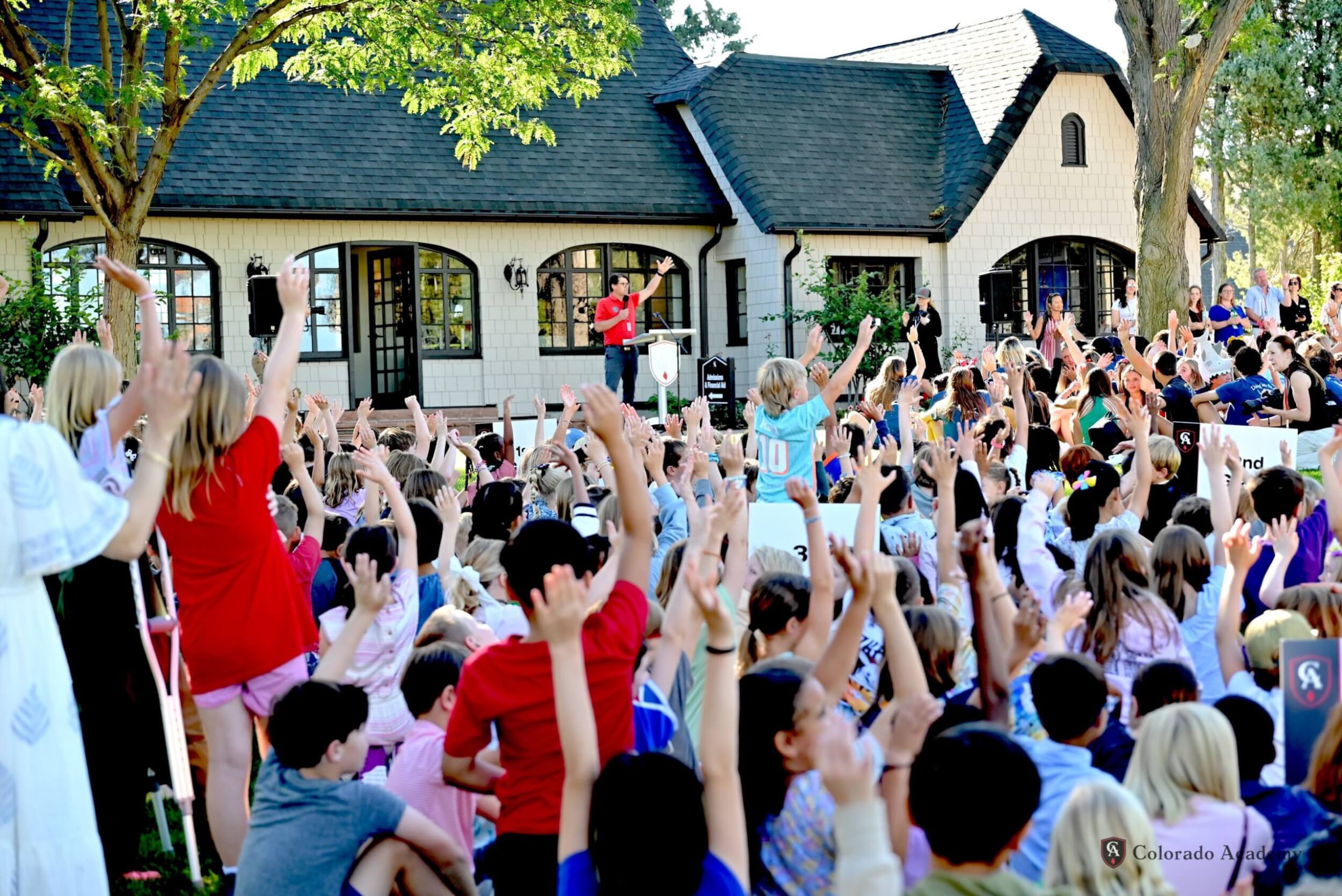What a fantastic first week of school we’ve had! It’s been wonderful to see our students back on campus, filled with energy and eagerness for the year ahead. Our teachers have done an exceptional job creating welcoming and engaging learning, artistic, and athletic environments, and it’s clear that everyone is settling in.
Continuing one of my favorite traditions, I read the names of our Seniors from the CA Class of 2025 during the opening All-School Assembly, and the entire school cheered them on. We welcomed parents/guardians at the All-School Picnic and the Parent Association Get INvolved Fair, and the Senior Class enthusiastically greeted the incoming Ninth Graders with an ocean-themed celebration as they entered the Upper School.
We’re excited for all that’s to come and look forward to continuing this positive momentum throughout the year.
SPEAK with David Brooks
As many of you know, New York Times columnist David Brooks will join us on September 12 at 8:30 a.m. to speak to the CA community.
We anticipate this will be a popular SPEAK event, and highly recommend you reserve your seat by RSVPing here. We expect every seat in the Leach Center to be claimed.
For those who cannot make it to campus to see David Brooks, we will be livestreaming the event on the CA website.
CA Theme for the Year: Being Seen
We have been intentional about dedicating this year to “Being Seen.” David Brooks’s book, How to Know a Person: The Art of Seeing Others Deeply and Being Deeply Seen, explores the importance of deeply understanding others and forming meaningful connections; this was our faculty and staff assigned book read this summer. Here are the main messages from the book:
- The Importance of Deep Connection: Brooks emphasizes that truly knowing someone goes beyond surface-level interactions. Deep connections require effort, attention, and a genuine desire to understand the other person’s inner world.
- The Art of Listening: Effective listening is central to knowing a person. Brooks highlights the need to listen with empathy, without judgment, and with the intent to understand rather than to respond. Listening deeply can reveal much about a person’s character, values, and needs.
- Seeing Beyond the Surface: Brooks encourages readers to look beyond first impressions and superficial traits. He discusses the value of understanding a person’s background, motivations, and the experiences that have shaped them.
- The Role of Vulnerability: Being open and vulnerable is essential for deep connections. Brooks suggests that allowing ourselves to be seen by others, flaws and all, creates a space for mutual understanding and trust.
- Building Compassionate Relationships: The book advocates for relationships rooted in compassion and empathy. By seeing the humanity in others and understanding their struggles, we can build stronger, more supportive relationships.
- The Social and Moral Dimensions: Brooks discusses how knowing others deeply has broader social and moral implications. In a society where people feel increasingly isolated, cultivating deep, meaningful relationships can contribute to personal fulfillment and societal well-being.
- Practical Steps to Know Others: The book offers practical advice on how to better know and understand the people in our lives, from asking thoughtful questions to being present in conversations and paying attention to non-verbal cues.
Overall, How to Know a Person is a guide to building richer, more fulfilling relationships by seeing others as they truly are and allowing ourselves to be seen in return.
One of the most profound gifts we can offer to our students, colleagues, and even ourselves is the simple, yet powerful, act of truly listening and seeing one another.
Listening goes beyond merely hearing words; it’s about being fully present in the moment, setting aside distractions, and genuinely engaging with the person in front of us. When we listen in this way, we validate the other person’s experience, acknowledging their feelings and thoughts as important. This creates a sense of belonging and connection, which is vital in a school environment.
Truly seeing someone means recognizing their unique individuality—their strengths, challenges, and the complexities that make them who they are. It’s about looking beyond surface-level interactions and understanding the deeper layers of each person’s story. This perspective allows us to foster empathy, nurture relationships, and create a community where everyone feels valued and respected.
In our classrooms and offices, practicing the art of listening and seeing can transform our interactions. When students feel heard and seen, they are more likely to engage, take risks, and express themselves authentically. For colleagues, this practice builds trust, strengthens teamwork, and promotes a positive work culture.
Following his SPEAK presentation with parents/guardians, our Upper School will have a Town Hall with David, where he will be interviewed by students in our ASR Global SuperPowers class.
By bringing in David Brooks, we are trying to model civil discourse for students growing up in an age of intense polarization. Over my years leading Colorado Academy, I have always felt that there is more that unites our community than divides us.
I routinely talk to parents who have a range of identities and political beliefs, and I always come away feeling like I have learned something. And, most important, I am reminded of our shared humanity. We are all at CA because we want to grow and learn together. This talk is an opportunity for us to help our students get out of echo chambers, lean into developing empathy, and learn how to listen and ask questions. It’s core to our mission. I hope you can attend this event, and I urge you to read his book.
